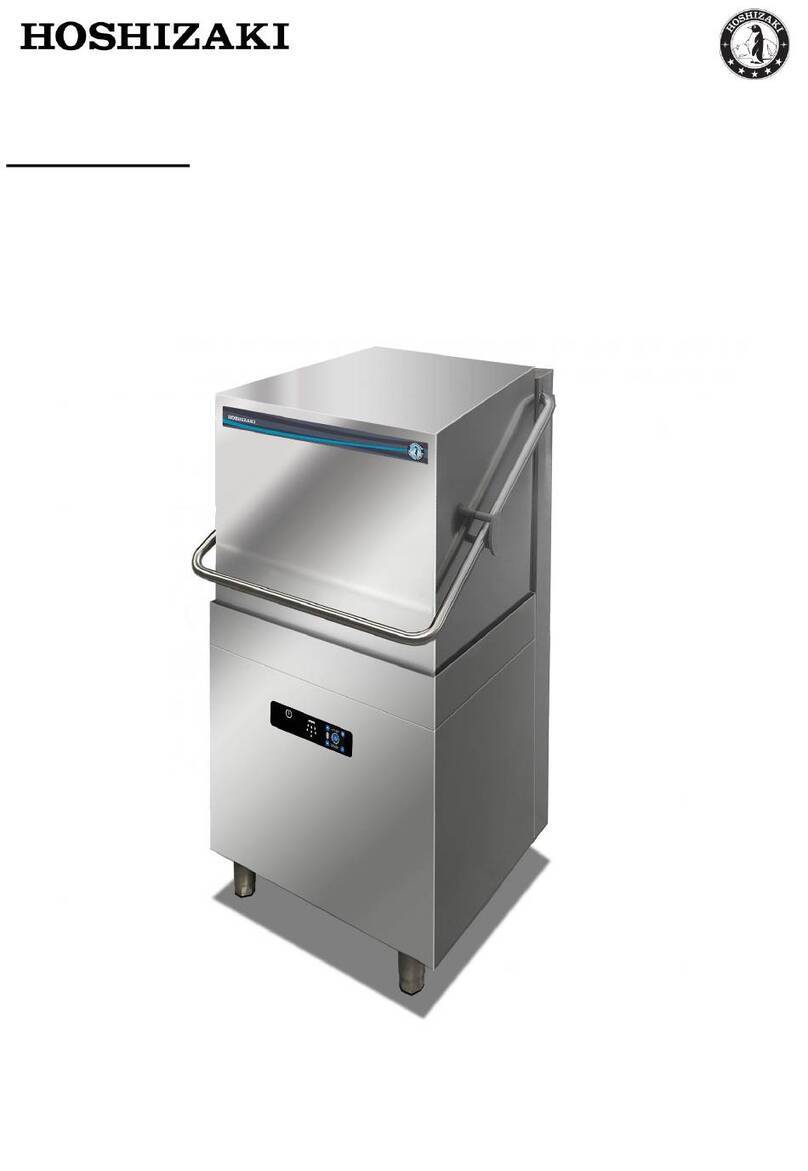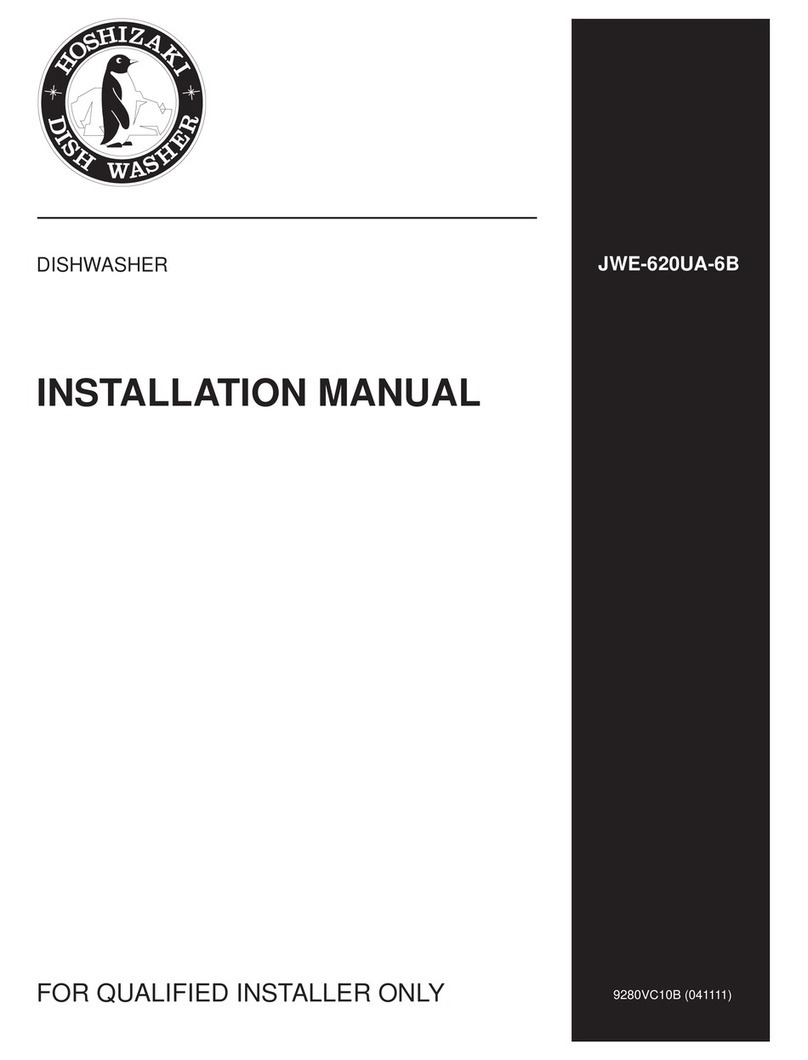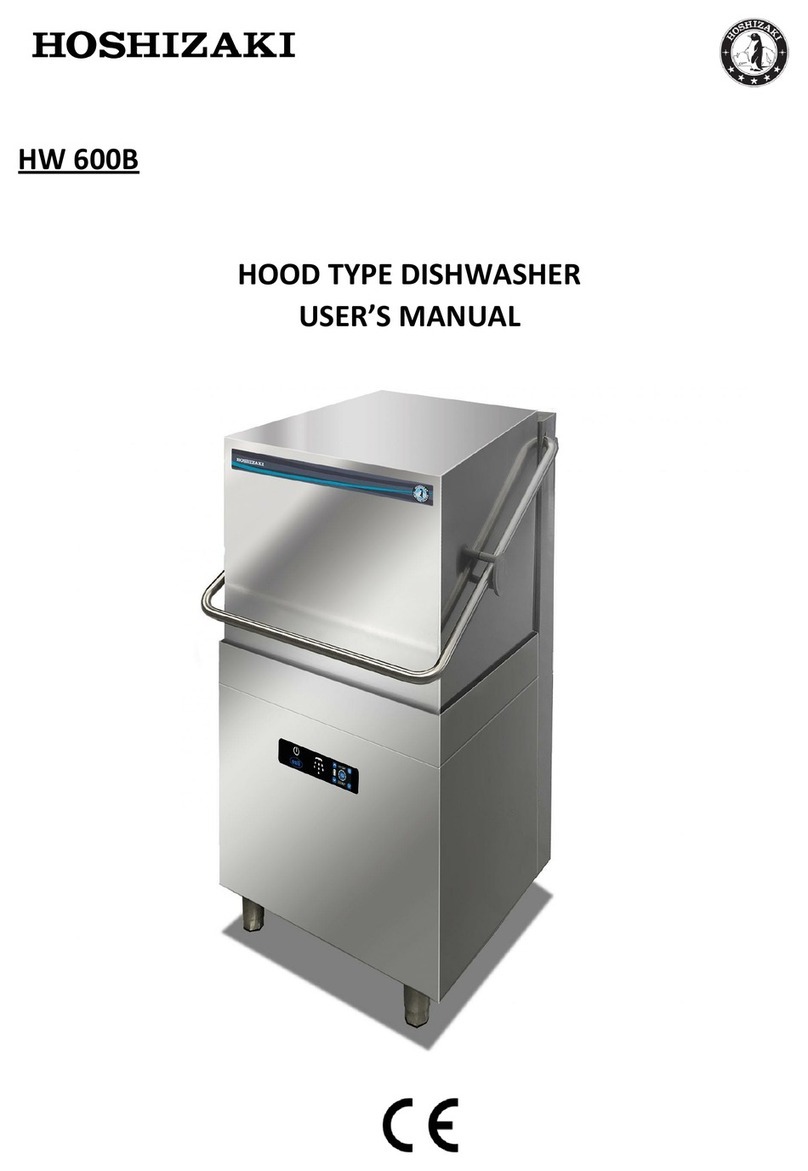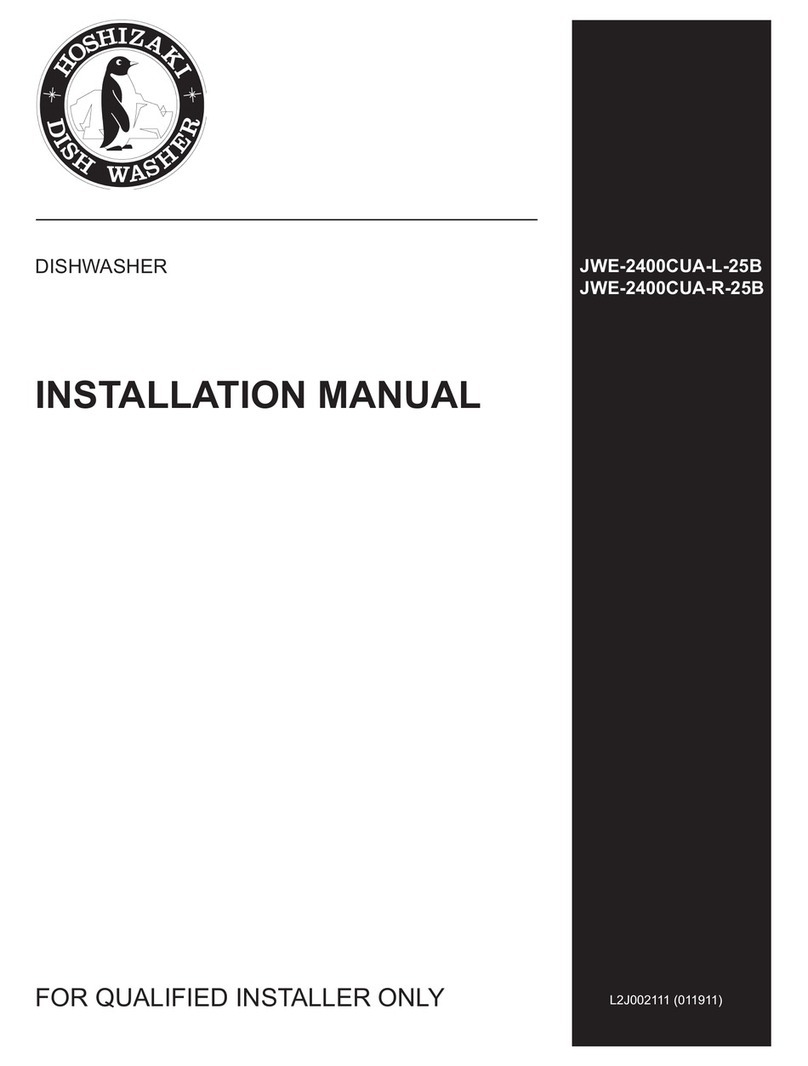
5
[a] CHECKS AFTER INSTALLATION
* In the presence of the installer, check for proper installation according to the installation
manual provided.
* Receive the installation manual from the installer, and keep it for later reference.
[b] WATER REQUIREMENTS
* Proper water quality can improve warewashing performance by reducing spotting,
lowering chemical supply costs, improving productivity and extending equipment life.
Local water conditions vary. The recommended proper water treatment for effective and
efficient use of this equipment will also vary depending on the local water conditions. Ask
your municipal water supplier for details about local water specifics prior to installation.
* Recommended water hardness is not more than 4 grains of hardness per gallon.
Chlorides must not exceed 50 parts per million. Water hardness above 4 grains per gallon
should be treated by a water softener or in-line treatment. Water treatment has been
shown to reduce costs associated with machine cleaning, reduce the need for deliming
the dishwasher, reduce detergent usage and reduce corrosion of metallic surfaces in the
internal booster tank and dishwasher.
* Sediment, silica, chlorides or other dissolved solids may lead to a recommendation for
particulate filtration or reverse osmosis treatment.
* If an inspection of the dishwasher or internal booster tank reveals lime build-up after
the equipment has been in service, in-line water treatment should be considered, and,
if recommended, should be installed and used as directed. Contact an authorized
Hoshizaki service company for specific recommendations.
[c] CHECKS BEFORE OPERATION
* Ambient temperature should be within 41 to 95°F (5 to 35°C). Operation of the unit for
extended periods outside of this normal temperature range may affect performance.
WARNING
To avoid the risk of corrosion, clogging and health problems, be sure to use
potable water.
* To prevent water leaks resulting in damage to the surrounding property, keep the water
supply pressure within 10 to 70 PSIG. If the water pressure is too high, a pressure
reducing valve (option) must be installed according to the water heater’s instruction
manual.




































